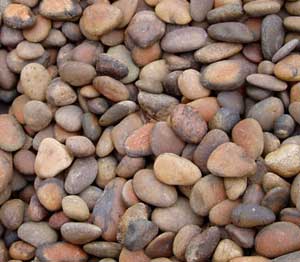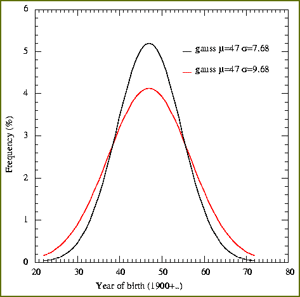No two pebbles are exactly alike, yet they all seem to converge to a unique geometric shape – a round object with curvature distributions that closely follow a Gaussian distribution, scientists claim.
 |
| Complete pebbles often have similar shapes, even as they shrink. (Photo: bourgetbros) |
Once this shape is formed, it will never change (at least in the experiments conducted). When a large pebble is worn down to become a tiny grain, it retains its classic appearance.
This enduring puzzle was solved by materials physicist Doug Durian from the University of Pennsylvania in Philadelphia, USA, and his team.
Aristotle once hypothesized that the round shape of pebbles results from faster erosion at the edges than in the center – an explanation that almost fully accounts for why sharp angles are smoothed away. However, our understanding has not progressed much beyond Aristotle’s time.
Durian and his colleagues suggest that the best way to identify round objects is to examine the presence of curves. A sphere has the same curvature everywhere. But the curvature of a pebble varies from one angle to another.
Durian’s team studied pebbles made from solidified mud in the bay of Mont St-Michel on the northern coast of France. Here, the tides create slightly flattened solid mud pieces that are intensely eroded over several months. As the erosion accelerates, the pebbles “perfect” from their sharp appearance to become round.
The team took two-dimensional photographs of over 60 pebbles in various states of erosion and calculated the curvature distribution around the perimeter of each pebble. This distribution was then plotted into a graph.
 |
|
A typical Gaussian curve. |
In such a graph, the curvature distribution of a circle would appear as a straight line. However, all pebbles display as a wide bell curve, and the older the pebble, the closer it approaches the shape described by the Gaussian curve.
Furthermore, although the exact shape of older pebbles varies, they all exhibit similar curvature distributions once they have surpassed a certain stage of erosion.
The research team indicated that the curvature distribution appears to depend not on the original shape of the pebble but solely on the erosion process itself. A gentler erosion process may yield narrower bell-shaped curves, leading to a shape closer to a perfect circle.
This raises the hypothesis that experts might be able to infer the origin of a pebble (for instance, whether it comes from a riverbed, a slow-flowing glacial area, or wind erosion) based on its shape.
T. An


















































